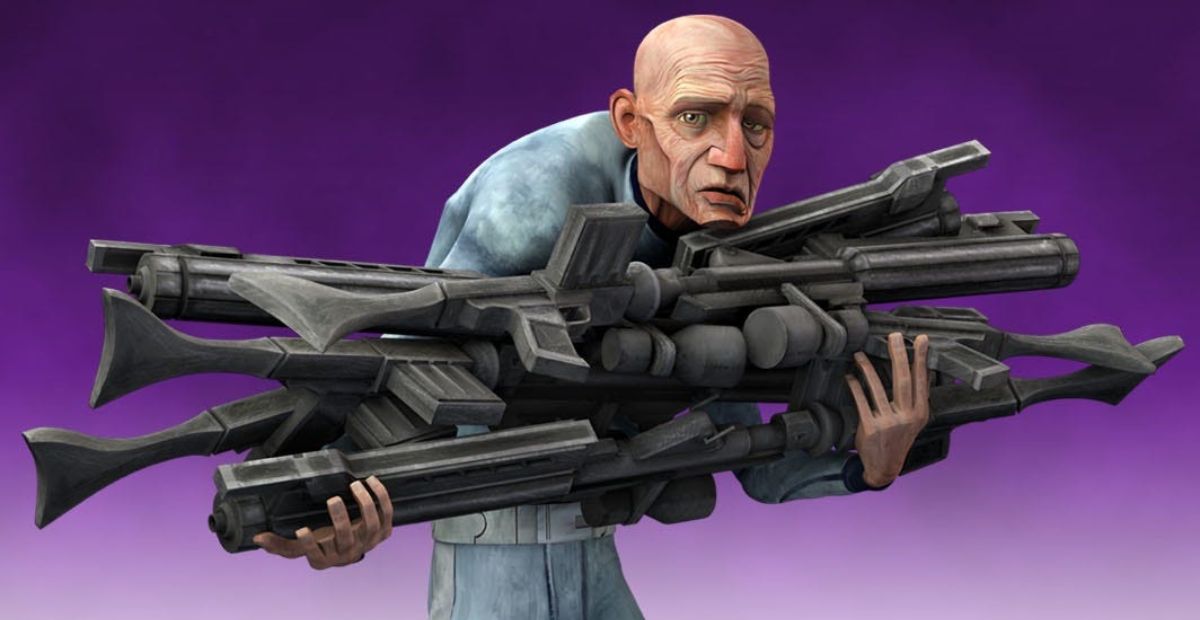Does anyone else ever notice this little detail? Out of the millions of clones created for the Grand Army of the Republic, only one was ever officially labeled as “defective.” We’re talking about Clone 99—the aging, physically deformed clone who served as a maintenance worker on Kamino.
That’s kind of wild when you think about it. With so many clones being produced in massive batches, you’d expect more genetic errors to slip through. If Clone 99 came from the same run as others, wouldn’t there be more like him? Or was there something else going on behind the scenes that we never fully understood?
Why Was Clone 99 the Only “Defective” One?
When you really look at the scale of clone production on Kamino, it’s almost unbelievable that only one clone—Clone 99—was labeled as “defective.” According to various sources in Star Wars lore, the Kaminoans created millions of clone troopers, with some estimates placing the number at over 3 million active units during the Clone Wars. That’s not even counting the countless backup batches still in development, trainees, or replacements constantly cycled into the war effort.
With mass production at that level, how did just one clone slip through with such obvious physical deformities and survive long enough to be named, known, and even remembered?
Just think about the numbers. According to estimates, over 1,728,000,000 clones were created for the Grand Army of the Republic. And you’re telling me only one came out visibly defective? That’s a failure rate of just 5.78703704E-8%—which is borderline impossible. There’s no way Clone 99 was the only one with anomalies. Statistically, there had to be more—maybe dozens, maybe thousands. So why don’t we hear about them? That’s what makes Clone 99’s survival so unique. He wasn’t just a flaw in the system—he was the only one allowed to live with it.
Well, here’s where things get interesting. As one fan pointed out, there’s a solid theory that the vast majority of defective clones never made it far enough to be noticed. If a Clone embryo showed severe genetic flaws, it may have been quietly discarded before “birth.” Others might have died shortly after due to medical complications. In that case, Clone 99 wasn’t just a rare case—he was a miracle of survival, the only one whose condition was stable enough to live, even if he wasn’t fit for combat.
And yet, despite his physical limitations, Clone 99 still found purpose during his time in service to the Republic. According to the Star Wars Databank:
“During the Clone Wars, Clone 99 was a malformed result of the cloning process. Due to his genetic defects and physical limitations, he was considered unfit for combat, and remained behind on Kamino to support the training efforts of his clone ‘brothers.’ Though his responsibilities were menial and his job consisted primarily of janitorial duties, he took pride in his work and in his connection to the Republic’s noble heroes.”
Clone 99 Wasn’t the Only “Defective” Clone
I believe we’ve all watched The Bad Batch series—and if you remember, the entire squad of Clone Force 99 are technically defective clones. But unlike Clone 99, their defects weren’t physical weaknesses—they were enhancements. Each member was born with a genetic mutation that gave them unique abilities: enhanced strength, heightened senses, superior intelligence, and unmatched marksmanship. These “defects” actually made them more effective than standard clones, which is why the Kaminoans turned them into a special ops unit.
The series also confirms something important—Clone 99 in TCW wasn’t the only defective clone. Others existed, but they were rare and often kept out of the spotlight. One clear moment is in the very first episode when Stak and Deke, two regular clones, meet the Bad Batch for the first time. Their exchange says it all:
Hunter: “We’re clones. Same as you.”
Deke: “You don’t look like clones.”
Stak: “They must be 99s. Defectives.”
Wrecker: “Defective and effective.”
That quick conversation tells us two things: first, the term “99s” has become shorthand among the clone ranks for defectives, clearly referencing Clone 99 himself. Second, even the newer clones like Stak and Deke can instantly tell that Clone Force 99 doesn’t match the standard template.
The Purpose of Defective Clones
However, if we think of defective clones as simple failures in the cloning process, we might be looking at it all wrong. These clones weren’t just mistakes—they were part of something intentional. The Kaminoans didn’t always discard mutations. In some cases, they saw potential in them.
Clone Force 99 is proof of that. These “defective” clones were the result of deliberate genetic manipulation. Their mutations weren’t accidents—they were enhancements. Stronger instincts, sharper minds, specialized combat skills. The Kaminoans clearly experimented with creating more advanced versions of the standard clone, and while Clone 99 himself wasn’t enhanced in the same way, his legacy proved that even the so-called failures could serve a bigger purpose.
And if we remember the moment in The Clone Wars when Cody first introduced the Bad Batch to Rex, he said it himself:
“Experimental unit Clone Force 99, they’re defective clones with, uh… desirable mutations.”
So that means these clones weren’t rejected—they were repurposed. The Kaminoans saw value in their uniqueness and turned them into an elite unit. What was once seen as a defect became a weapon. And it all ties back to the legacy of Clone 99, proving that even the ones who didn’t fit the mold had something powerful to offer.

